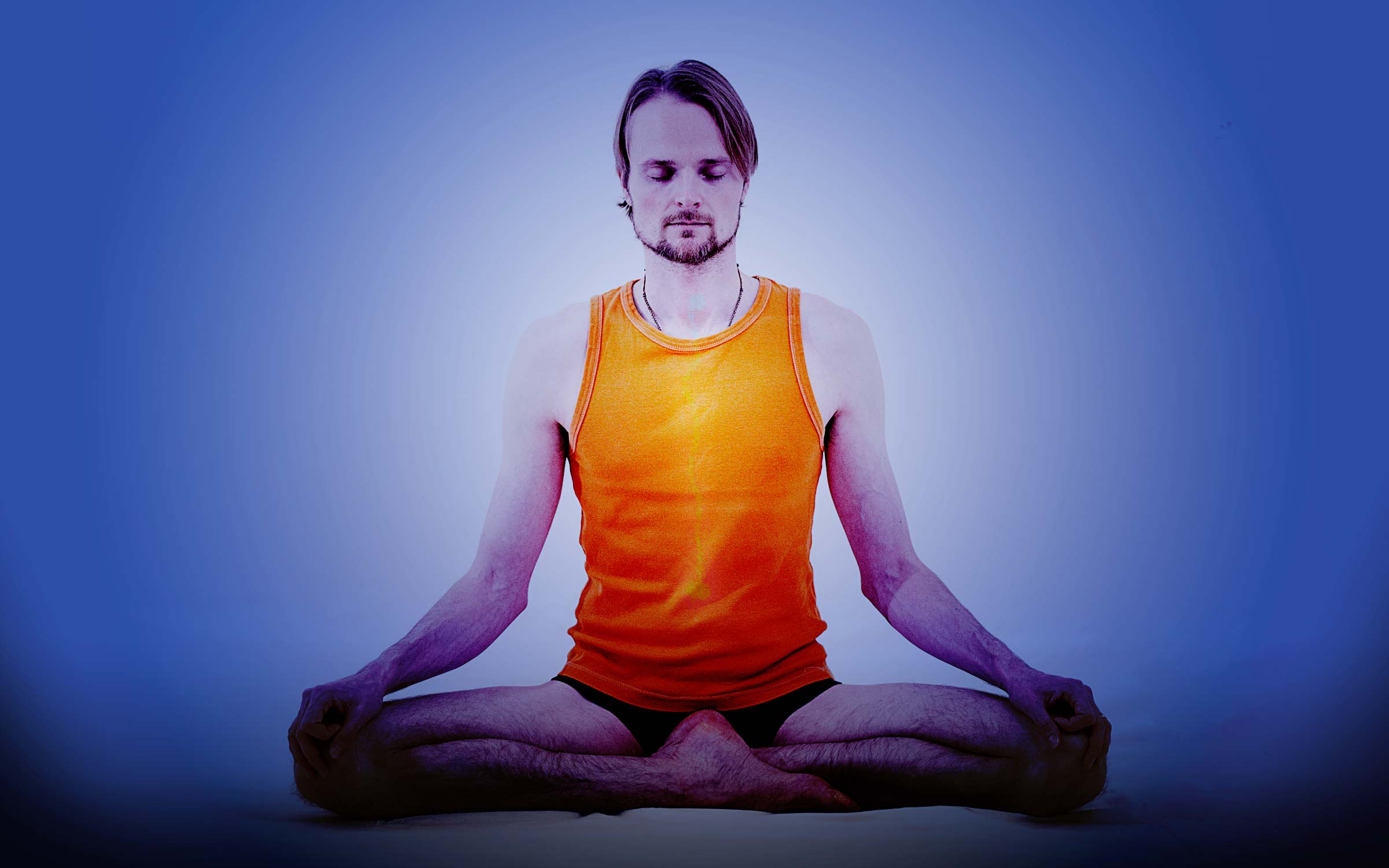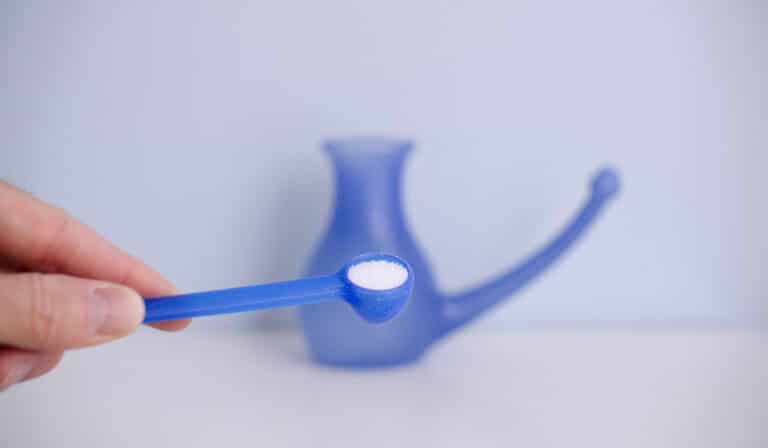The Source of Energy or Vishuddhi Shuddhi is a meditation we teach a lot within the Janakanada branch of the Satyananda tradition. It is a rare technique that has its roots in the secret practices of hatha yoga. It is a meditation based on the understanding of psychic anatomy as has been preserved within the yoga tradition.
A different kind of meditation
Most meditation techniques such as Vipassana, Zen, Transcendental Meditation and others, are all techniques that train the capacity to remain present and to observe the fluctuations of the mind. These techniques all increase the ability to be aware and fully allow any experience. In the yoga tradition, a meditation called Antar Mauna or Inner Silence fills the same function. Today, this meditation type is popularly called mindfulness meditation.
In hatha yoga, the concern is not the mind, but rather the focus is on awakening the energies in the subtle body. In the Source of Energy meditation, as in other
Ujjayi pranayama
The psychic energy is intimately tied to the breath. When we make the breath calm and even, then we also establish a peaceful and stable state. Therefore we use a particular breathing technique throughout the Source of Energy. This technique is ujjayi pranayama or the psychic breath as we like to call it.
You do ujjayi by producing a light whispering sound deep down in the throat. It is easy to make, and everyone can learn it. By breathing in this way and by holding the breath after the in- and exhalation following a certain rhythm, you prolong the breathing and make it smooth and even.
The psychic breath confronts the practitioner with psychic tensions stored in the energetic body. In the beginning, it can be provoking. But with time the tensions are dissolved, and the breath becomes harmonious, slow and pleasurable. The energy that was blocked becomes available.
Listen to how the ujjayi breath sounds.
Frontal passage
In the Source of Energy meditation, we use an energy passage in the front part of the body. This passage is one of the major
The air and the mantra
The Source of Energy is built up in a sequence of five steps, and it takes between 30 and 50 minutes to do the full meditation. It is so accessible that most people can learn and practice it.
In the beginning one imagines air moving in the passage to the rhythm of the breath. When you concentrate enough on the concept of air moving you will have the impression that you feel it. Not in a physical way but rather as a subtle current of energy.
Later on in the mediation, we introduce a mantra. Now you imagine the mantra moving with the breath. This deepens the practice. You imagine the mantra, you hear it in the sound of the breathing.
This way of experiencing a mantra is called Ajapa Japa. I would translate it as spontaneous mantra repetition. A typical characteristic of Satyananda yoga is to do Ajapa Japa together with the psychic breath.
Kechari mudra
While practising the psychic breath, you place your tongue in a specific position. It is called
There is also an advanced versions of khecari mudra where you insert your tongue into the nasopharynx. If you want to know more about this amazing method then you must read my article “Khecari Mudra – the Revival of the Spacewalking Seal“.
What is it like to have a lot of energy?
As the name suggests, this is a technique that raises your energy. But what does that mean? I am not referring to some mysterious energy but energy as we all know it; energy that in daily life takes the form of courage, endurance, the power of initiative and joy. When your energy is high depression can’t take hold, and negative thoughts are not strong enough to hold you back. Tasks get done effortlessly. Others enjoy your company and feel refreshed by your presence.
When we lack energy, on the other hand, we are tired and easily hurt, we find excuses to avoid effort, and we see the world as through a grey filter.
The best time of the day for the source of energy meditation
You can practice the Source of Energy at any time of the day as long as you have digested your last meal. If your stomach is not empty, the psychic breath is uncomfortable if not to say impossible. You will also be prone to drowsiness, and you might even fall asleep.
An ideal moment to practice is early morning. Morning practice gives you energy for the whole day. Meditating before lunch or late in the afternoon is also good and gives you an energy boost. Combining a morning session with the Source of Energy in the morning with the Antar Mauna meditation (or another mindfulness style meditation) later in the day is a great match. These two types of practices complement each other.
If you are already feeling energetic, you might not want to practice this meditation in the evening. However, that isn’t a general rule. Find out what works for you.
How often to practice the Source of Energy meditation
For best results be regular with your practice. Regularity gives even and stable energy. Regular can mean everything from once a week to twice a day. What is best for you depends on your motivation and your life situation. Set a realistic goal and stick to it.
As an entry-level pranayama meditation, the Source of Energy will not overwhelm you with energy. Hence, regularity is less critical than with advanced high energy techniques. You should do advanced techniques very regularly or not at all.
Combining with other techniques
The source of Energy is an excellent meditation to integrate into a more extended session of asana, pranayama and Yoga Nidra. In most cases, I recommend placing the meditation at the end of the session. Then the source of Energy will benefit from the previous practices making it calmer, more profound and sharper.
You can also combine the Source of Energy with breathing exercises. An excellent combination would be Nadi Shodana pranayama followed directly by the meditation.
Where can you learn the Source of Energy
Teachers trained within Swami Janakanada’s organisation all teach the Source of Energy. In the Satyananda lineage as a whole, most yoga teachers teach some variation of it. Swami Janakanada partly describes the meditation in his book Yoga, Tantra and Meditation in my daily life. The best way to learn it is on a yoga retreat under ideal circumstances or during long sessions where you prepare yourself with other techniques.
I have made the whole meditation available on my website Forceful Tranquility, both as an independent meditation and integrated into more extended sessions.
Going further
Vishuddi Shuddhi is the first initiation. In the same type of practices, there are other more advanced techniques. I am particularly fond of the Source of Energy because it is so simple and flexible.
The next meditation is a comprehensive meditation that Swami Janakananda simply calls Ajapa Japa (in Satyananda’s books he refers to it as intermediate or advanced Ajapa Japa). Here you will discover a more important energetic passage in the spine as well as other chakras in a nine-step sequence that last twice as long as Vishuddi Shuddi. Ajapa Japa works on a deeper level and is more transformative. When used daily, the Source of Energy and Ajapa Japa give you a powerful energy field and keep your mind clear and uncluttered. They help you to live a vibrant and fearless life.




